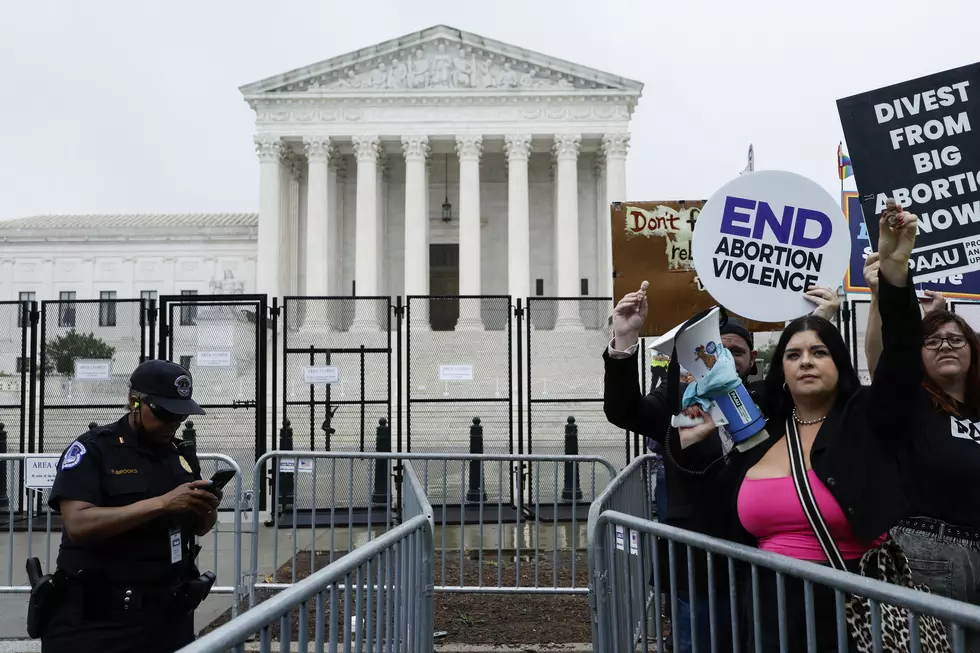
Chad’s Morning Brief: Terror in France, Texas’ Abortion Law in Court, and Other Top Stories
Here is your Morning Brief for January 8, 2014.
Terror in France
According to FOX News, the terrorists in Paris who killed 12 people were likely highly trained individuals.
The Islamist gunmen who mounted Wednesday's terrorist attack at a Paris satirical magazine's office moved with the skill and precision of highly-trained commandos, military experts told FoxNews.com.
Masked and garbed in black, the AK-47 wielding assassins appeared to be executing a well-coordinated plan in the late-morning raid, methodically seeking out and executing those targeted for death, and making a clean getaway -- all in the span of a few minutes. Moments after the 11:30 a.m. attack, the three assassins were gone. A manhunt continued into the evening in a shaken and locked-down Paris. The Paris-based Metro newspaper reported that police have identified the two gunmen and the getaway driver as a pair of French-born brothers and a homeless man whose nationality is not known. Police said they were between 18 and 32, and that they knew their names, although they did not release them. Online reports said the brothers had fought in Syria and returned to France in the summer.
A chilling video of two gunmen stopping their getaway car to wound, chase down and execute a police officer raising his hand in a plea for mercy shows shows tactics and movement that only comes with training, said retired Army Lt. Col. Ralph Peters, a Fox News strategic analyst.
“It was evident immediately that this was a carefully planned, sophisticated operation by well-trained, well-armed veterans of jihad,” Peters said. “This was not a pick-up team. These butchers were methodical and efficient. They weren't just terrorists: They were terrorist commandos.”
In the video, the killers are seen advancing along the street in perfect unison, seamlessly trading places as one man provides cover fire and the other moves forward. They also were dressed in black tactical gear and balaclavas to conceal their faces.
Peters pointed to the focus and efficiency of the trio, contrasting it with an approach that might be expected of wild-eyed wannabes.
“There aren't little giveaways, it's the overall skill with which the attack was executed,” Peters said. “And they didn't just go nuts and shoot wildly, as amateur jihadis do. They set out to kill specific people and never list focus. [They] even stayed cool during the getaway phase. These men had killed before.”
In the aftermath of the attack, images showed a police car's windshield bearing an ominously precise grouping of bullet holes, although it did not appear that the car's occupant was one of the two police officers killed. Still, such accurate shooting is likely not the result of luck, given the powerful recoil of AK-47s.
“These are not amateurs,” Scott Stewart, vice president of tactical analysis at global intelligence firm Stratfor, told FoxNews.com. “Especially when you compare it to the [deadly, but amateurish lone wolf attack on Oct. 22, 2014] in Ottawa.
“These men were working as a fire team,” he said.
Stewart believes the killers, who witnesses said spoke unaccented French, likely were trained in the Middle East and had possibly seen battle there. More that 1,000 French jihadists are estimated to have left to fight alongside terrorist groups like Islamic State and Al Qaeda, stoking fears that they would continue to kill in the name of Islam upon return.
We will know more as the investigation continues, but this just seems like another of the "new" type of attacks. Small groups of Islamic Terrorists who pick and choose soft targets.
Texas' Abortion Law
A three-judge panel yesterday had a lot of questions over Texas' abortion law according to the Texas Tribune.
In a long line of tough questioning Wednesday over a new Texas abortion law, federal appeals judges here questioned whether part of a provision requiring abortion facilities to meet hospital-like standards should be struck down.
The possibility that the three-judge panel of the U.S. Fifth Circuit Court of Appeals would rule in favor of the abortion providers seemed slim before this week’s hearing, given that two of the judges had previously upheld some of the state’s abortion restrictions. But on Wednesday, the judges took turns grilling attorneys in taking a deeper dive into the provision.
The provision is part of House Bill 2, which the Texas Legislature passed during a special session in 2013. It requires facilities that perform abortions to meet the same standards as ambulatory surgical centers. This includes minimum sizes for rooms and doorways and additional infrastructure like pipelines for anesthesia. A decision from the Fifth Circuit is not expected for at least several weeks.
Judge Catharina Haynes, the most vocal of the three judges Wednesday, questioned the state’s argument that all of the hospital-like standards being imposed on abortion facilities would improve women’s safety.
“What about that improves the standard of care?” Haynes asked Jonathan Mitchell of the Texas solicitor general’s office, referencing requirements for larger rooms in abortion facilities that would force most abortion providers to retrofit their clinics. “Why can’t you have a sterile environment in a 3,000-square-foot building?”
Mitchell said the requirements are reasonable measures to “enhance accountability” of facilities performing abortions. The ambulatory surgical center provision is meant to create a “uniform rule” of standards to protect women, he added.
Stephanie Toti of the Center for Reproductive Rights, which brought forth the lawsuit on behalf of the abortion providers, argued that the provision would lead to the closure of most abortion clinics in the state and put more women at risk.
If the law is upheld, only a handful of Texas abortion clinics — all in major metropolitan areas — would remain open, leaving women west or south of San Antonio anywhere from 150 to 500 miles away from a Texas abortion facility, the providers’ attorneys have argued.
Haynes questioned whether this effect of the abortion law made it irrational to claim that its intended purpose was to improve the standard of care “if you have women driving these distances.”
But she also seemed to indicate that some aspects of the ambulatory surgical center provision, specifically those that do not involve the retrofitting of facilities, should be upheld.
“Wouldn’t you agree that there are at least some that are practical?” she asked Toti, who disagreed.
The judges also zeroed in on the effects of the abortion law on women living in West Texas. Aside from the challenge to the ambulatory surgical center provision, the lawsuit also asks for a reprieve for two clinics from a separate provision of the law that requires doctors who perform abortions to have admitting privileges at a hospital within 30 miles of an abortion clinic.
A separate three-judge panel, which included Haynes and Judge Jennifer Walker Elrod, upheld the provision last year. But the providers’ attorneys argue that the two clinics in question, Whole Woman’s Health in McAllen and Reproductive Services in El Paso, shut down because of that provision. The poor, mostly minority women in these areas are disproportionately affected by the law, they argue.
On Wednesday, Elrod questioned whether a substantial amount of women in this area would face challenges in obtaining an abortion when they could travel to New Mexico for the procedure.
Toti said that the state’s argument that the abortion law is meant to improve patient safety is invalidated if they are going to rely on New Mexico as a nearby alternative because its abortion regulations are not as strict as in Texas.
“The state of Texas is essentially forcing abortion providers out of practice and shuttling these patients to New Mexico,” Toti said.
Haynes agreed, questioning whether the state was “undercutting” its own argument. “If these restrictions are so necessary, why send women across the border to New Mexico?” she said.
Mitchell responded that the state prefers for abortions to be performed at ambulatory surgical centers to ensure women’s safety, but he added that it would be unable to stop patients from going out of state.
Judge Edward C. Prado focused on whether long travel distances were enough to deem the law unconstitutional. He questioned what travel distance, if any, the state would consider an undue burden.
Mitchell said there was precedent that increasing travel distance by 100 miles was not an undue burden, but he added that the U.S. Supreme Court, which set the undue burden standard, has not provided specifics.
In late August, U.S. District Judge Lee Yeakel of Austin struck down the provision just days before it was set to go into effect. The state immediately appealed to the Fifth Circuit.
Elrod was on a separate three-judge panel that temporarily allowed the state to enforce the ambulatory surgical center provision as the case makes its way through the appeals process — a decision reversed by the U.S. Supreme Court.
No matter what the Appeals Court says, this won't be the end of the debate.
Other Must Read Links:
These and many more topics coming up on today’s edition of The Chad Hasty Show. Tune in mornings 8:30-11am on News/Talk 790 KFYO, streaming online at kfyo.com, and now on your iPhone and Android device with the radioPup App. All guest interviews can be heard on our KFYO YouTube page after the show and online at kfyo.com.
More From News/Talk 95.1 & 790 KFYO









